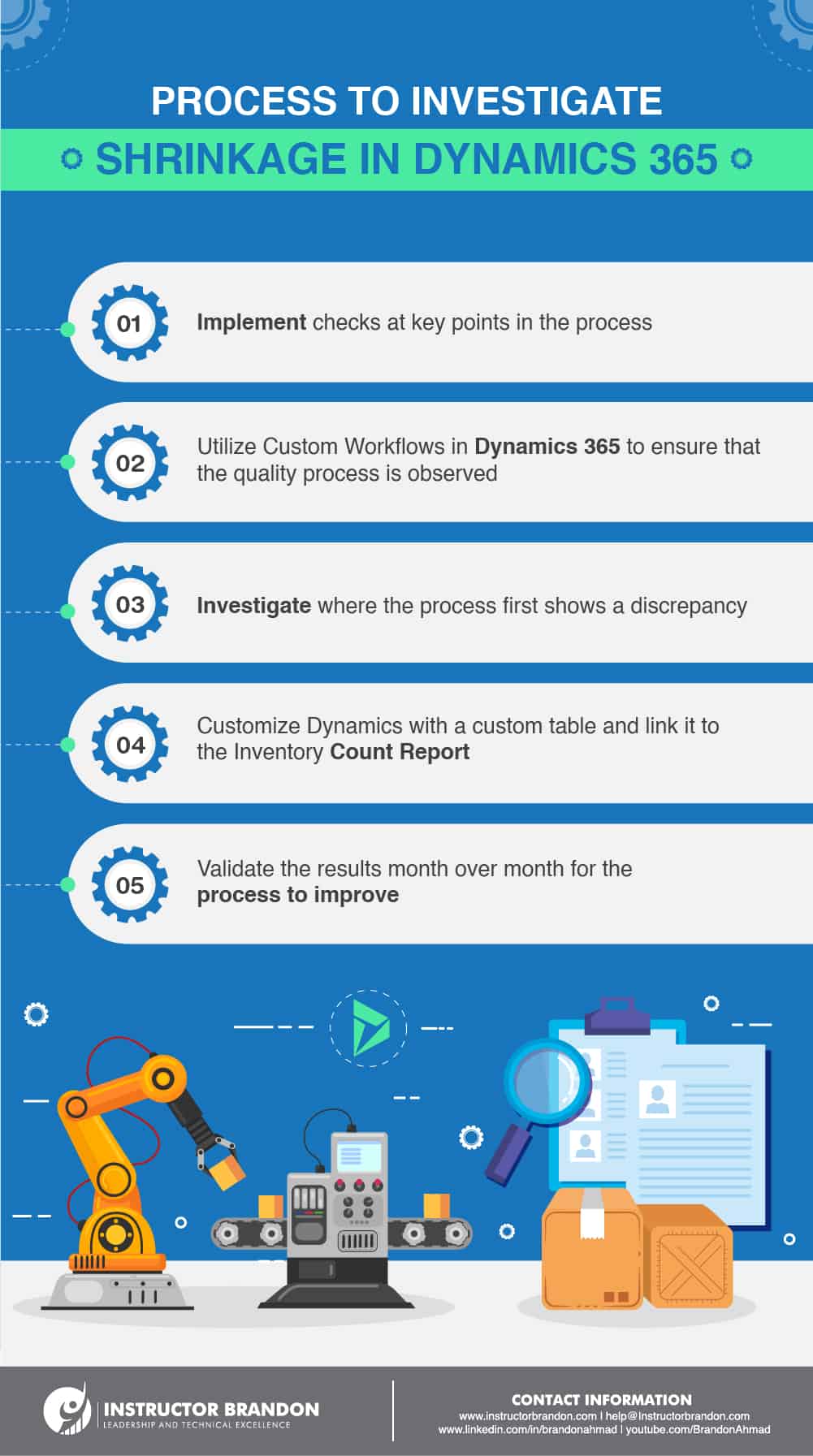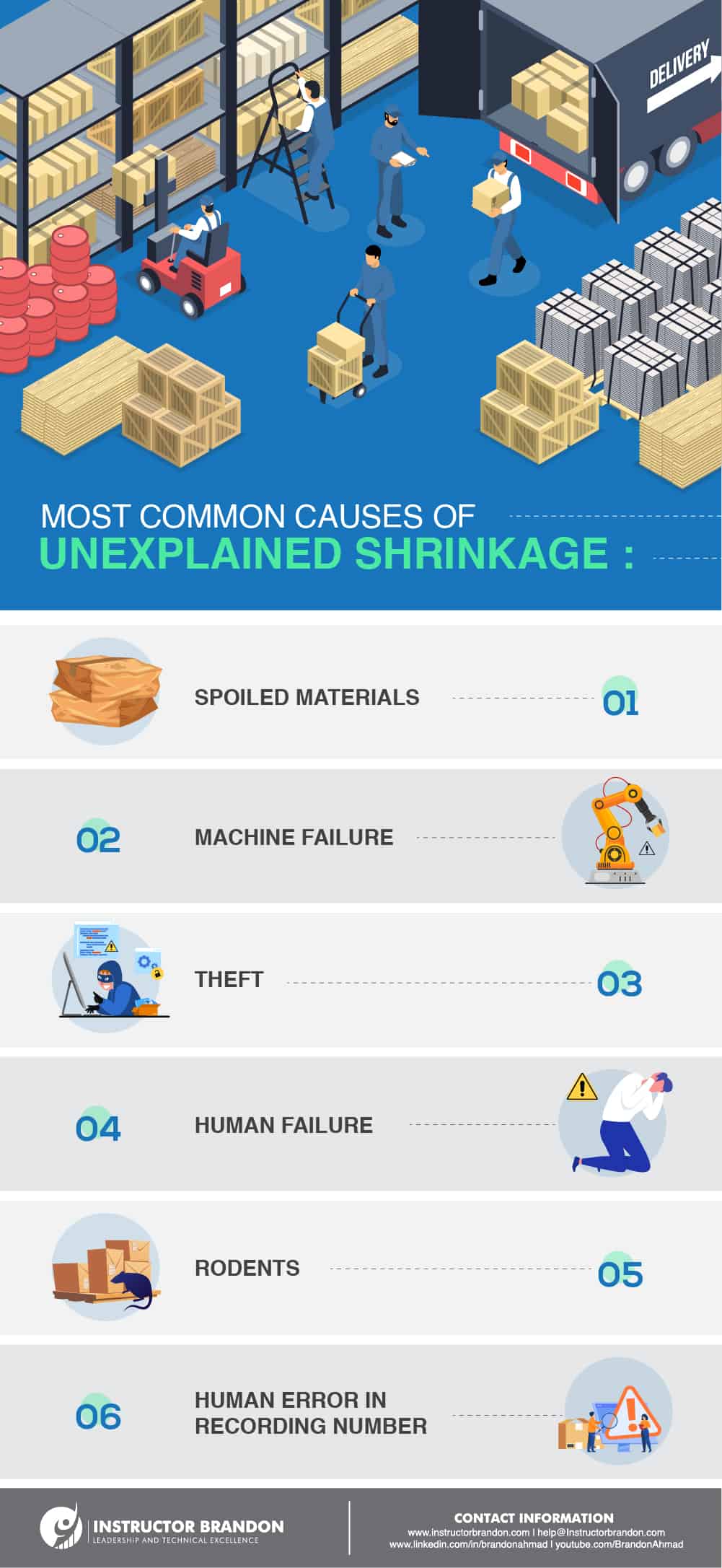Dynamics 365 Tutorials
IB Detective Series: Case of the Disappearing Product Part 1
We return with our first real-world, investigative series in over the last year with a new case of a billion-dollar company that was suffering from a strong case of “disappearing product.” Discovering the cause of a missing product can get really tricky, and it is always an emergency as it can have bad business consequences. The solution may not just be something technical as is often seen with performance tuning. Many times business processes have been compromised by external factors, such as rats, theft and failing machines. electric outages, etc.
Case of the Disappearing Product
 A multi-billion dollar company contacted me after having suffered through inventory loss for months. Consistently, the company would find itself with missing product. This would cause inventory shortages and other pitfalls. Making matters more perplexing, BOM output tests consistently showed expected yields. Material Requirements Planning for inventory quantity with respect to sales also proved to be fairly accurate. Yet, the company continued to suffer inventory shortages as they found themselves consistently with less inventory. This issue needed to be solved fast as the company was approaching a busy season and needed to be able to detect causes of this in Dynamics 365 Finance and Supply Chain.
A multi-billion dollar company contacted me after having suffered through inventory loss for months. Consistently, the company would find itself with missing product. This would cause inventory shortages and other pitfalls. Making matters more perplexing, BOM output tests consistently showed expected yields. Material Requirements Planning for inventory quantity with respect to sales also proved to be fairly accurate. Yet, the company continued to suffer inventory shortages as they found themselves consistently with less inventory. This issue needed to be solved fast as the company was approaching a busy season and needed to be able to detect causes of this in Dynamics 365 Finance and Supply Chain.Answer: This is the common problem of Shrinkage where a company is not always aware of what is causing an inventory problem. It’s something that any company who participates in the warehouse process will have to encounter. Before beginning, we need to learn a few new terms as this series, case of the disappearing product will be involved on both a functional and technical level.
Functional Terms that we need to know
| Term | Explained in Even terms I can understand |
| Yield | A ratio which compares the amount of usable output to how much input was required for a process to produce a result |
| Shrinkage | The reduction in actual quantities of items in stock, in process, or transit. The loss can be caused by all kinds of factors including theft, deterioration, machine failure, evaporation, ect. |
| Quantity Planned | Quantity Needed / (1 – Shrinkage Factor) Or Quantity Needed/ (Yield Percentage) |
| Scrap | Material outside of specifications that cannot be used for further work |
| Fixed Scrap | Quantity lost when the equipment starts up |
| Scrap Factor | Percentage factor used to compensate for the expected loss during the manufacturing cycle as it relates to expected scrap |
| Shrinkage Factor | Percentage factor is used to compensate for the expected loss during the manufacturing cycle related to expected shrinkage. This differs from scrap in that it relates to all components of an item, not just one. |
This IB detective series, case of disappearing product will have 3 parts:
| Missing Inventory Series | Parts |
| Part 1 | The default Terms and the case Scenario |
| Part 2 | The functional Check – let’s see what Dynamics 365 has in order for us to test this out |
| Part 3 | The technical solution (read disclaimer below for prerequisites to understanding it) |
Inventory Shrinkage
There are various terms for inventory shrinkage: warehouse shrinkage, product shrinkage, loss of product. They all conclude to the same thing – your product is missing from the warehouse shelves. We can say it leads to a case of disappearing product.
To be more clear, inventory shrinkage refers to a situation when the stock in hand is less than the stock in the inventory list. This could be due to various reasons; theft, shoplifting, natural evaporation, products being damaged, an incorrect measurement of goods, or some other similar cases.

Inventory Shrinkage in Retail Business Scenario
Inventory shrinkage is the difference between a firm’s inventory record and its actual inventory. It is a costly issue that confronts retailers all over the world as it diminishes their profitability. In the retail business, it is termed retail shrinkage. In the manufacturing business, it is known as inventory shrinkage.
Retail shrinkage happens for a variety of reasons. However, most of them boil down to these four main categories of shrinkage.
- External theft
- Internal theft
- Administrative error
- Vendor fraud
External Theft (Shoplifting)
A leading cause of shrinkage in the retail business is shoplifting. Customer theft occurs through concealment, altering or swapping price tags, or transfer from one container to another. Customers may also attempt to return stolen goods or imitation designer products to receive cash. Shoplifting continues to cost retailers billions of dollars every year.
Employee’s Theft
Half of all retail shrinkage is due to internal or employee theft. This occurs when company workers steal or misappropriate funds or goods. Fraudulent use of discounts, refunds, and credit cards are some of the ways of thefts used by employees.
Administrative Error
Administrative error is also one of the reasons for retail shrinkage and it diminishes the profitability of retailers. The pricing mistakes due to markups or markdowns can cost retailers loss. It can also happen because of poor record-keeping and inventory management. Cash counting mistakes also contribute to shrinkage.
Vendor Fraud
Vendor fraud is the vendor’s intention to deceive for personal gain. vendor fraud occurs when the vendor bills a company for a certain quantity of goods but does not supply all of the goods. They record the invoice for the full cost of the goods, but records fewer units in stock, causing the company to shrink.
Inventory Shrinkage in Warehouse Business Scenario
Most business with warehouse components suffers a great deal of loss due to inventory shrinkage. The causes of inventory shrinkage boil down to these three categories.
- Warehouse theft
- The disappearance of goods while shipping
- Damage
Warehouse theft
Whether it is by your employees or by a supplier, theft of any kind can cause a great deal of loss to the business. You will have a hard time believing that employees that you thought were honest, turn out to be a thieve, causing your business a great deal of loss. So, as much as we’d like to trust every employee, the truth of the matter is that warehouse theft can and will occur.
The disappearance of goods while shipping
The more inventory moving in and out, the greater the chances that stock items are misplaced, damaged, or worse, stolen. Hence, the disappearance of goods while shipping goods from one place to another causes businesses a great deal of loss.
Damage
Goods being damaged during shipping can also cause the disappearance of goods. It is one of the common reasons for inventory shrinkage. It is due to the passing of goods through many hands on the way to end customers.
Common and Costly Inventory Mistakes
Lets discuss some common and costly inventory mistakes ultimately leading to case of disappearing product.

Strong knowledge of inventory is a critical component of any retail business that affects business operations. You need to know your inventory and its operation and If you’re experiencing inventory shrinkage not related to sales, it means you are losing your inventory.
Here are some of the common inventory mistakes that occurs by the inventory management team:
- Having too much inventory
- Doing everything by hand
- Not optimizing product displays
- Not checking inventory often enough
- Trusting employees too much
- Avoiding the shoplifting threat
- Not providing adequate training
- Putting too much faith is third party services
- Having no plan for unmarked inventory
- Not having a control system for inventory while the store is open
Having too much inventory
If you have too much inventory, it will be much harder to move it quickly, which can depreciate your goods. There is also the added cost of that clutter cutting into your valuable cost. This usually happens when you have products that haven’t been sold because the amount exceeds the projected demand. You can end up having too much inventory if you fail to properly manage the stock. Hence causing the inventory shrinkage.

Doing everything by hand
Admit it, that you can’t do everything by your hands. Without automated ways to track inventory status, businesses will have no way to know when it’s time to restock shelves, or correct inventory mishaps as they occur and prevent them from happening again. Also, without automated inventory management software, there is a much greater chance for mistakes to be made. A barcode system can simplify and significantly improve your tracking methods.
Not optimizing product displays
You need to know about reliable and current inventory numbers. This will allow you to compare stock counts to sales numbers and illuminates what’s being stolen. By conducting smaller counts regularly, rather than year-end stocktakes, you can fully document your inventory. You can take inventory of your store more than setting aside enough time during off-hours. In other words, you need to make sure that your store shelves are well organized and all of your products are easily seen.
Not checking inventory often enough
Implementation of check and balance is necessary to avoid inventory shrinkage. This can be done if you systemize your inventory management practices, this will help identify shrinkage patterns. Also, if you wait too long for inventory checks, it becomes much easier for details to fall through the cracks. Performing checks on a small group of merchandise regularly provides you with the most up-to-date information.
Trusting employees too much
It is hard to accept, but internal theft is one of the big issues that contribute to inventory shrinkage. Retailers must take the threat of internal theft seriously. The best way to hinder fraud and employee theft is to separate inventory and accounting duties between more than one employee. Don’t allow the same person to handle everything. You can also make bag checks mandatory at the end of the shifts or store employee’s belongings in centralized locations that can help reduce losses.
Ignoring the theft of shoplifting
Shoplifting can seriously dent your inventory if you don’t implement preventive measures. The retailer needs to install obvious surveillance and anti-theft signage, when people know they are being watched, they are less likely to act distastefully. You can also train your employees to recognize shoplifter’s behavior and make sure your store is laid out to increase visibility as much as possible.
Not providing adequate training
Ensuring proper employee training is necessary if you want to avoid inventory management mistakes. You should have strict policies in place to ensure that employees are aware of the steps that will be taken if they don’t perform their job properly. Make sure your employees are well trained to identify shoplifters and employ enough staff to man critical areas while keeping an eye on customer movement. No inventory procedure is expected to work if the employees conducting it do not know what to do.
Putting too much faith in third-party services
Simply hiring outside inventory management services isn’t necessarily enough. Retailers should continue to prepare for an inventory as if they were conducting it on their own to be sure nothing is lost in translation. You can lose track of your inventory easily if a third party is handling it for you. Believing your third party, who is giving you inventory management services is surely an easy thing to do, but it will cost you a great deal of loss for your business if any mishap happens.
Having no plan for unmarked inventory
Before starting an inventory, plan how you would deal with unmarked inventory beforehand. Unmarked inventory that is found during an inventory can create problems. So plan for dealing with such items before an inventory.
No controlled system while the store is open
Sometimes it is necessary to conduct inventory during business hours. You need to maintain a check and balance of each and everything ranging from shoplifters to checking on employees that might be involved in product theft. So there must be a control system to prevent miscounts or other issues that might arise.
Summary: Case of Disappearing Product Part 1
In summary: case of the disappearing product, this will be one interesting series. Can you guess what the problem was at this time? By the end of this series, you’ll know how to functionally check it and figure out how to come up with a very interesting technical solution provided that you have the prerequisites. If you find yourself lost on the technical part than check out our x++ Programming Bootcamp. I spent over 2 years enhancing the default courseware with real-world examples from experience. Anyway, we will be rocking and rolling with cool functional tricks in part 2 where we get our inner supply chain on. Then, it gets technical in part 3. Till the next post.
[sc_fs_multi_faq headline-0=”h2″ question-0=”What is the Case of the Disappearing Product?” answer-0=”This is the common problem of Shrinkage where a company is not always aware of what is causing an inventory problem. It’s something that any company who participates in the warehouse process will have to encounter. Before beginning, we need to learn a few new terms as this series, case of the disappearing product will be involved on both a functional and technical level.” image-0=”” headline-1=”h2″ question-1=”What is Inventory Shrinkage?” answer-1=”There are various terms for inventory shrinkage: warehouse shrinkage, product shrinkage, loss of product. They all conclude to the same thing – your product is missing from the warehouse shelves. We can say it leads to a case of disappearing product. To be more clear, inventory shrinkage refers to a situation when the stock in hand is less than the stock in the inventory list. This could be due to various reasons; theft, shoplifting, natural evaporation, products being damaged, an incorrect measurement of goods, or some other similar cases.” image-1=”” headline-2=”h2″ question-2=”Is it good to have too much inventory?” answer-2=”If you have too much inventory, it will be much harder to move it quickly, which can depreciate your goods. There is also the added cost of that clutter cutting into your valuable cost. This usually happens when you have products that haven’t been sold because the amount exceeds the projected demand. You can end up having too much inventory if you fail to properly manage the stock. Hence causing the inventory shrinkage.” image-2=”” count=”3″ html=”true” css_class=””]
 2700
2700 

